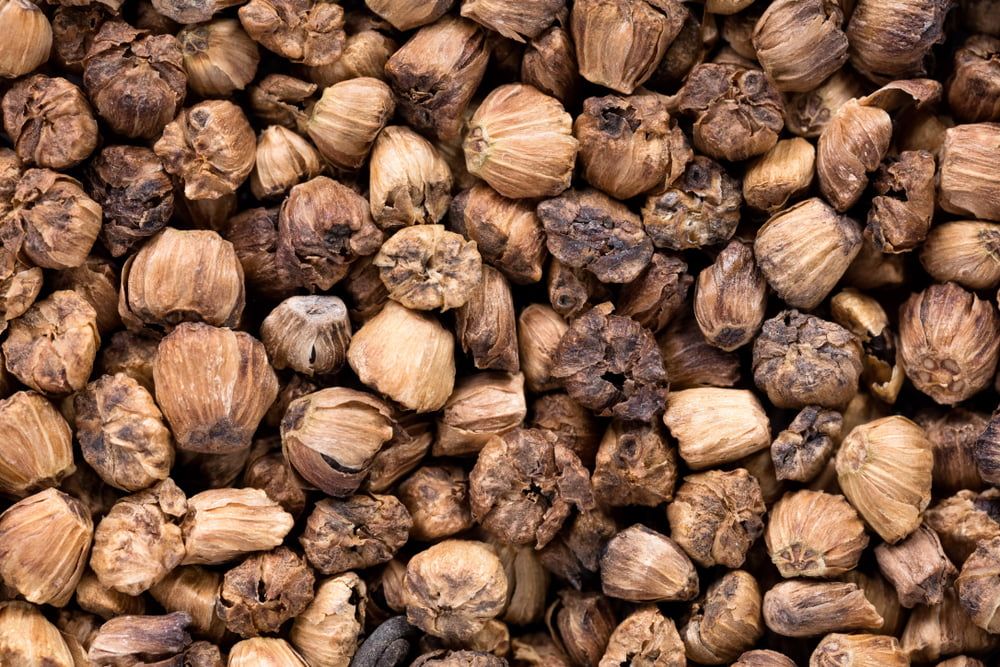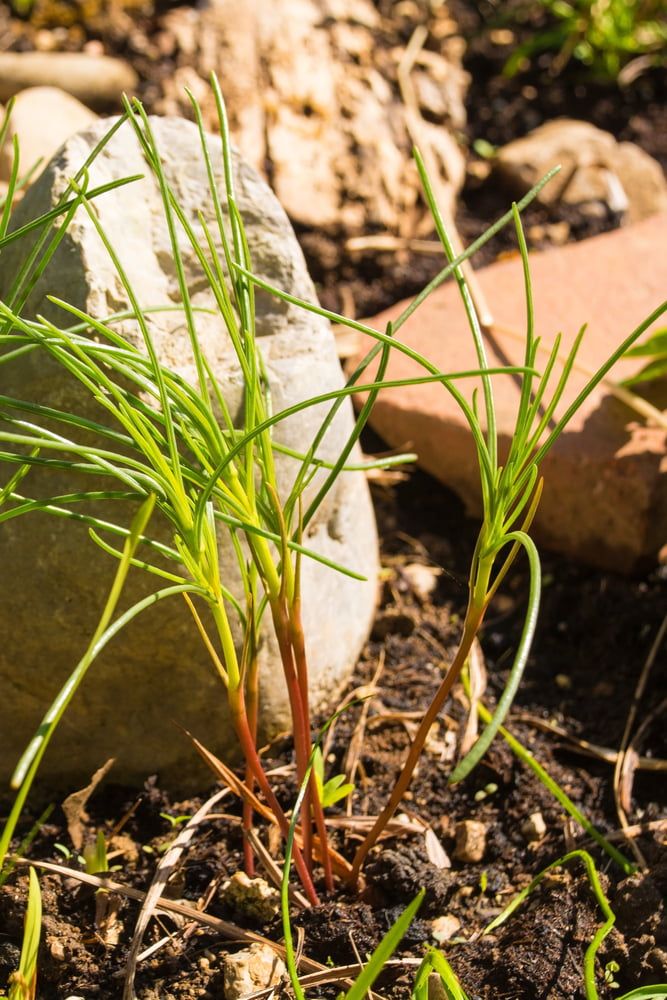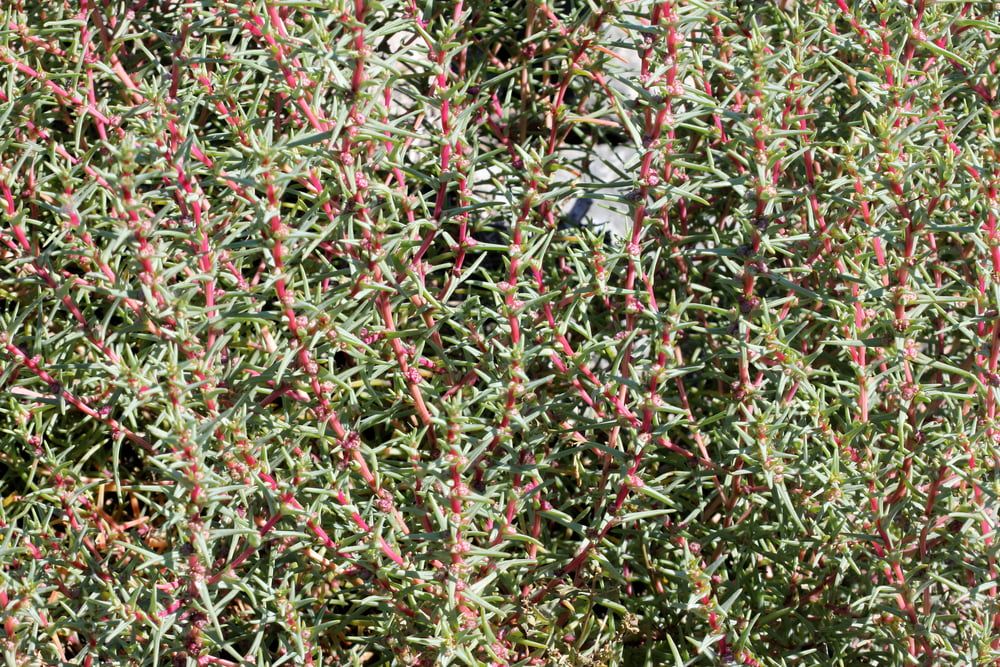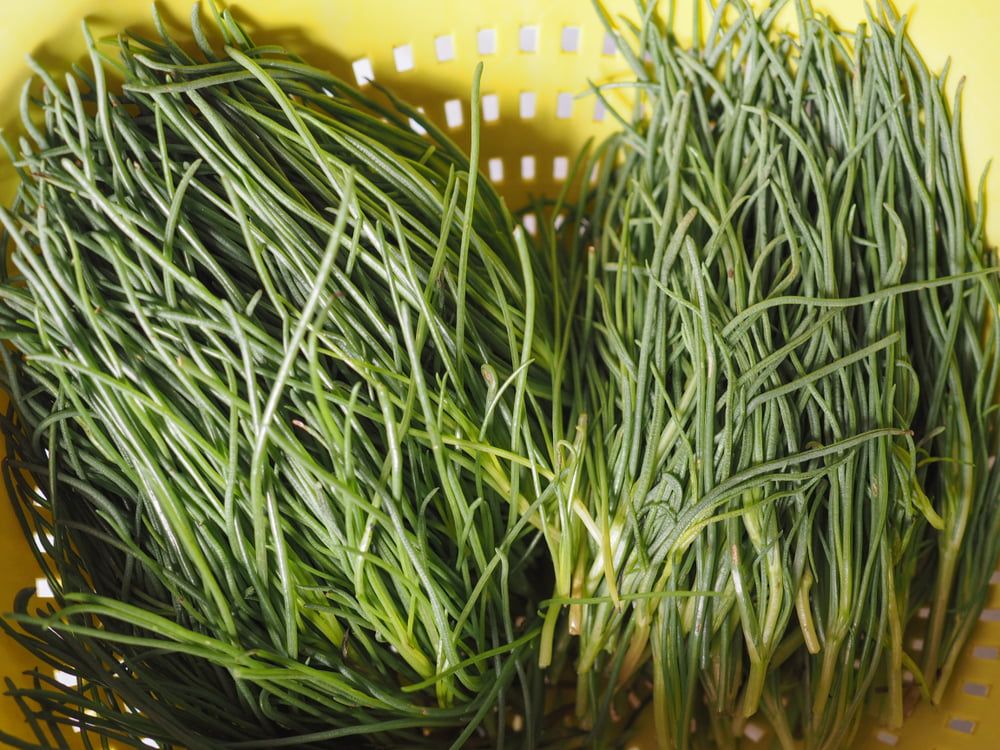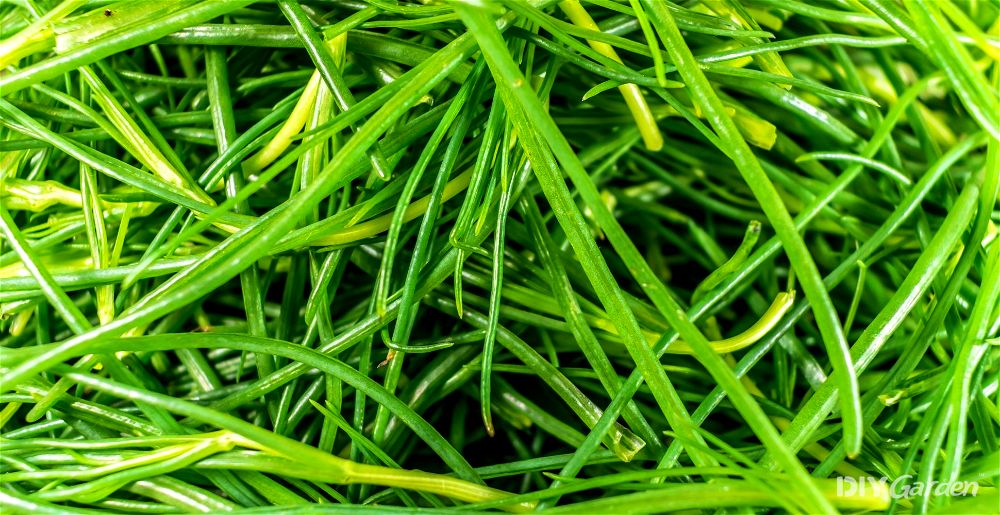
How to Grow Your Own Agretti Plants
Agretti (Salsola soda), also known as monk’s beard, is an Italian vegetable that’s gaining popularity in the UK for its unique, salty flavor and crunchy texture.
It’s a cool-season crop that does well in mild climates, making it suitable for growing in the UK.
Here’s a step-by-step guide on how to grow agretti plants in the UK:
1. Seed Acquisition
- Start by sourcing your agretti seeds from a reputable supplier. Agretti seeds have a short viability period, so ensure they are fresh and purchase them close to your planting time.
2. Optimal Planting Time
- Agretti is best sown directly outdoors in early spring, as soon as the soil can be worked, typically around March or April in the UK. This plant prefers cooler growing conditions and might not thrive in the heat of summer.
3. Soil Preparation
- Agretti prefers a well-draining soil with a neutral to slightly alkaline pH. Work the soil to a fine tilth and incorporate some organic matter, such as compost, to enrich the soil.
4. Sowing Seeds
- Sow agretti seeds thinly, about 1 cm deep, in rows that are 30 cm apart. Because agretti seeds have a hard outer shell, soaking them in water for 24 hours before planting can improve germination rates.
5. Watering
- Keep the soil consistently moist but not waterlogged. Agretti plants enjoy moist conditions, especially during the germination and early growth stages.
6. Thinning
- Once the seedlings emerge and are large enough to handle, thin them out to about 10 cm apart. This gives each plant enough space to grow and prevents overcrowding.
7. Care and Maintenance
- Agretti requires minimal care once established. Keep the area weed-free and maintain soil moisture with regular watering. Avoid over-fertilizing, as the plant doesn’t need high levels of nutrients.
8. Harvesting
- Agretti can be harvested approximately 7-8 weeks after sowing. Cut the shoots when they are about 20-30 cm long. Leave the roots in the ground, as agretti can produce multiple harvests from a single planting.
9. Successive Planting
- For a continuous harvest, consider sowing new seeds every 2-3 weeks in the spring. This staggered planting approach will provide you with fresh agretti throughout its growing season.
10. Pest and Disease Management
- Agretti is relatively disease-free but keep an eye out for common garden pests. Use organic methods like hand-picking or insecticidal soaps to manage any infestations.
11. End of Season Care
- After the final harvest, remove any remaining plants and compost them. Amend the soil with compost to prepare for the next growing season.
12. Saving Seeds
- If you’d like to save agretti seeds for next year, allow some of your last plants to flower and produce seeds. Harvest the seeds once the flowers have dried, and store them in a cool, dry place for next season.
Growing Agretti: A Quick Snapshot
When to Sow – Mar-Sep
When to Plant – Apr-Sep
When to Harvest – May-Oct
Average Yield per Plant – 80g
Spacing – 20-30cm
Depth – 1cm
How to Grow Agretti at Home
So, why aren’t more gardeners growing agretti?
It all comes down to seed availability – they’re really not easy to get ahold of. For starters, the seeds are only properly viable for about three months. You may have a small amount of success with seeds that are up to one year old, but anything older than this simply won’t germinate. The seeds from this annual aren’t easy to save either, and with central Italy experiencing more flooding in recent years, supply isn’t able to meet demand.
That said, if you’re determined enough, you’ll probably be able to find yourself a good seed supplier. Once you do and you’ve managed to germinate some seeds, you’ll find that the plants are easy to care for.
Growing Requirements for Agretti
You don’t need much space to grow agretti. In fact, if you grow it indoors and are able to keep it frost-free, you can grow it year-round. Agretti plants grow to about 60cm in height and 45cm in width. They look very much like a large chive plant, making them easy to add into empty spaces in your garden.
Since agretti comes from the Mediterranean, it does best when given full sun. Too much shade will inhibit growth and you will likely end up with a poor harvest.
The best soil type to go for would be loamy and well-draining. While it’s true that many of the other vegetables that prefer this soil mix will also do well in other soil types, try to keep your soil as well-draining and loamy as possible when growing agretti. Germination can be erratic, so give your plants the best possible chance.
How to Grow Agretti from Seed
Since seeds are so hard to come by and germination can be difficult, it would be best to start your seeds indoors, where you can keep a close eye on them. Many gardeners in the Mediterranean have success with direct sowing agretti seeds, but unless you live in a similar climate, it’s not worth taking this chance.
Just like with many other leafy greens, agretti is best sown successionally. You’ll be cropping your first batch of plants in about two months, so aim to sow some seeds every few weeks for a continuous harvest throughout the summer.
Before you get sowing, soak your agretti seeds overnight. This isn’t strictly necessary, but it helps to break down the hard outer coating on the seeds, which then improves germination.
How to Sow Agretti Seeds:
- Fill modules or small pots with a multi-purpose compost. You may also want to mix some perlite in to give your soil mix some extra drainage
- Water the soil well, making sure that excess water is able to easily drain away. Any blocked drainage holes should be cleared immediately
- Sow a few agretti seeds into each module or pot. Unlike other vegetables, you can sow agretti a little thicker, since germination is often quite poor
- Cover the seeds over with more compost. They only need to be about 1cm deep, so don’t bury them too much
- Lightly water your seeds
- Place your seeds somewhere warm. Although agretti plants can tolerate cooler temperatures, the seeds germinate best in temperatures of around 18°C
It should take between one to three weeks for your agretti seeds to germinate. Once they do, move them somewhere bright and keep your seedlings moist.
How to Plant Agretti Outside
Once you’ve had your last spring frost, you can plant your agretti seedlings outside. Ideally, the seedlings should be at least 5cm tall before they are transplanted.
Before planting your agretti out, you’ll need to harden them off. Don’t rush this process – it would be a shame for your plants to suffer from transplant shock, especially since the seeds are so hard to come by.
Once you’re ready to get planting, make sure that your growing area is weed-free and that the soil is well-draining. If it’s not, you may want to mix some well-rotted animal manure through.
Dig holes in the ground that are just slightly larger than the root balls of your seedlings. Space each hole about 20-30cm apart. The more space that you can give your plants, the bushier they will grow.
Gently remove your seedlings from their modules and place them into their new homes. Cover the roots back over with soil, firm down, and water well.
How to Plant Agretti in a Greenhouse
If you live in a cooler climate, agretti is a great crop to grow in a greenhouse. You’ll be able to start harvesting your plants earlier in the spring, as well as later into the winter.
The only issue would be the heat in mid-summer. Too much heat can cause agretti stems to turn woody, making them unpalatable. Ideally, time things right so that your summer harvests take place outside, while your spring and autumn plants mature in your greenhouse.
Another option would be to grow your agretti in containers. This way, you can start them off in your greenhouse before moving them outside once the weather warms up. Agretti has quite shallow roots, making it perfect for container growing.
How to Care for Agretti
Some find that their agretti plants need very little care during the growing season, especially since they’re so fast-growing. However, in order to obtain maximum yields, your plants should be given the following:
Watering Agretti
Being native to the Mediterranean means that agretti is tolerant of drier conditions. However, if you allow your soil to completely dry out, this changes the texture of the plant, meaning that the stems that you harvest will be quite hard and dry, rather than succulent and juicy.
Try to give your agretti about 2.5cm of water a week. While it’s true that agretti is salt-tolerant, meaning that you could water it with sea water, stick with non-salted water if possible.
Feeding Agretti
If you incorporated well-rotted animal manure into your growing area before planting, then your agretti plants shouldn’t need a fertiliser. On the other hand, if you know that your soil is lacking, or if your plants seem to be struggling in any way, an application of a balanced 10-10-10 fertiliser can help to give them a boost.
Weeding and Mulching Agretti
Agretti doesn’t do well when it has to deal with competition from weeds, so try to keep the area around your plants as weed-free as possible. One easy way to do this is by mulching your plants. This also provides the added benefits of increasing soil moisture levels and keeping the roots of your plants cool in the summer. Using an organic mulch is even better, since this will feed the soil, and therefore your plants, as it breaks down.
How to Harvest Agretti
Once your agretti plants are about 15cm tall, you can start to harvest them. The younger the stems are when picked, the more tender they’ll be.
Start by picking the central stems from your plants. This will encourage your plants to grow in a bushier habit, meaning more for you to harvest. Simply cut off sections/leaves as and when you need them, leaving the roots in the ground. It won’t be long before you’ll notice new growth.
If you have several agretti plants, expect to harvest them about twice a week.
Over time, your agretti stems will turn quite woody. This will happen faster in warmer weather. Any new growth will be short and straggly, which is a sign that the plant is ready to start producing flowers and seeds. At this point, you can either dig up the entire plant to salvage any leaves that may still be edible, or you can leave your plants in to dry out and then attempt to harvest seeds to sow next year.
How to Store Agretti
Agretti is quite a delicate vegetable, meaning that it’s best eaten as fresh as possible. However, it should keep in the fridge for a few days.
Alternatively, you can freeze your agretti harvest to store it longer-term. You’ll need to blanch it first before flash freezing on a tray. Then, move your frozen agretti into an airtight bag or container for a delicious supply throughout the winter months.
How to Prepare & Cook Agretti
Agretti is an easy vegetable to prepare. Simply give it a good wash and it’s ready to be used. Some also like to submerge their agretti into iced water for a few minutes before using it. This helps to prevent oxidation, enabling the vegetable to better retain its colour and texture, even after it has been cooked.
Agretti can be eaten raw when it is still young. However, most choose to cook agretti before using it. Whether you blanch it, boil it, or steam it, agretti doesn’t need to be cooked for long. Ideally, you want the leaves to soften slightly, while still retaining their crunch. It’s an easy vegetable to overcook, so keep a close eye on it.
A few tasty ways to use agretti in the kitchen are:
- Lightly steamed agretti topped with lemon juice, olive oil, salt, and pepper
- Braised agretti with garlic
- Chopped agretti added to an omelette
- Agretti pasta
- Agretti and new potatoes topped with oregano
What Does Agretti Actually Taste Like?
As mentioned, agretti is loved for its subtly salty and sour flavour. It has the texture of asparagus mixed with the flavour of spinach, but slightly saltier. That said, it isn’t as salty as samphire. This makes it incredibly versatile in the kitchen – just about anything that you would use spinach or samphire for can be made with agretti instead.
Common Agretti Problems
Diseases aren’t usually an issue with agretti. The plant also manages to defend itself pretty well against pests, but only once it has matured. Until then, the pests that you need to keep an eye out for are:
- Slugs – slugs love munching on young and tender agretti leaves. Fortunately, there are plenty of slug deterrents out there. Beer traps work well, as do sheep fleece mulches
- Cabbage white butterfly – the same pest that will decimate your brassicas will also flock to your agretti plants. You’ll notice small green caterpillars crawling around your plants, as well as the white butterflies fluttering nearby. Covering your plants with a mesh before the butterflies have laid their eggs can help. If you’re too late to do this, pick off as many caterpillars as possible and try to keep your plants as healthy as you can. Stressed plants will end up with more damage
Popular Agretti Varieties to Grow
There aren’t many agretti varieties out there. Plus, with seeds being so difficult to find, you’ll likely have to take what you can get, rather than being able to choose from different varieties.
However, if you aren’t able to find any agretti seeds, don’t despair. There are a few other similar vegetables that you could grow instead:
- Samphire – another succulent plant that can be used like agretti, with the difference being that samphire tastes much saltier
- Okahijiki – the Japanese version of agretti, with a very similar taste
- Sea beans – a rare plant that isn’t easy to cultivate, but is worth trying to source seeds for
Conclusion
Hopefully, after reading all about agretti, you’re now tempted to find some seeds and try growing this vegetable yourself. If you’re a fan of leafy greens, this is a vegetable that you’ll love. Not only does it taste uniquely delicious, but it’s packed with nutrients and is so easy to grow!

